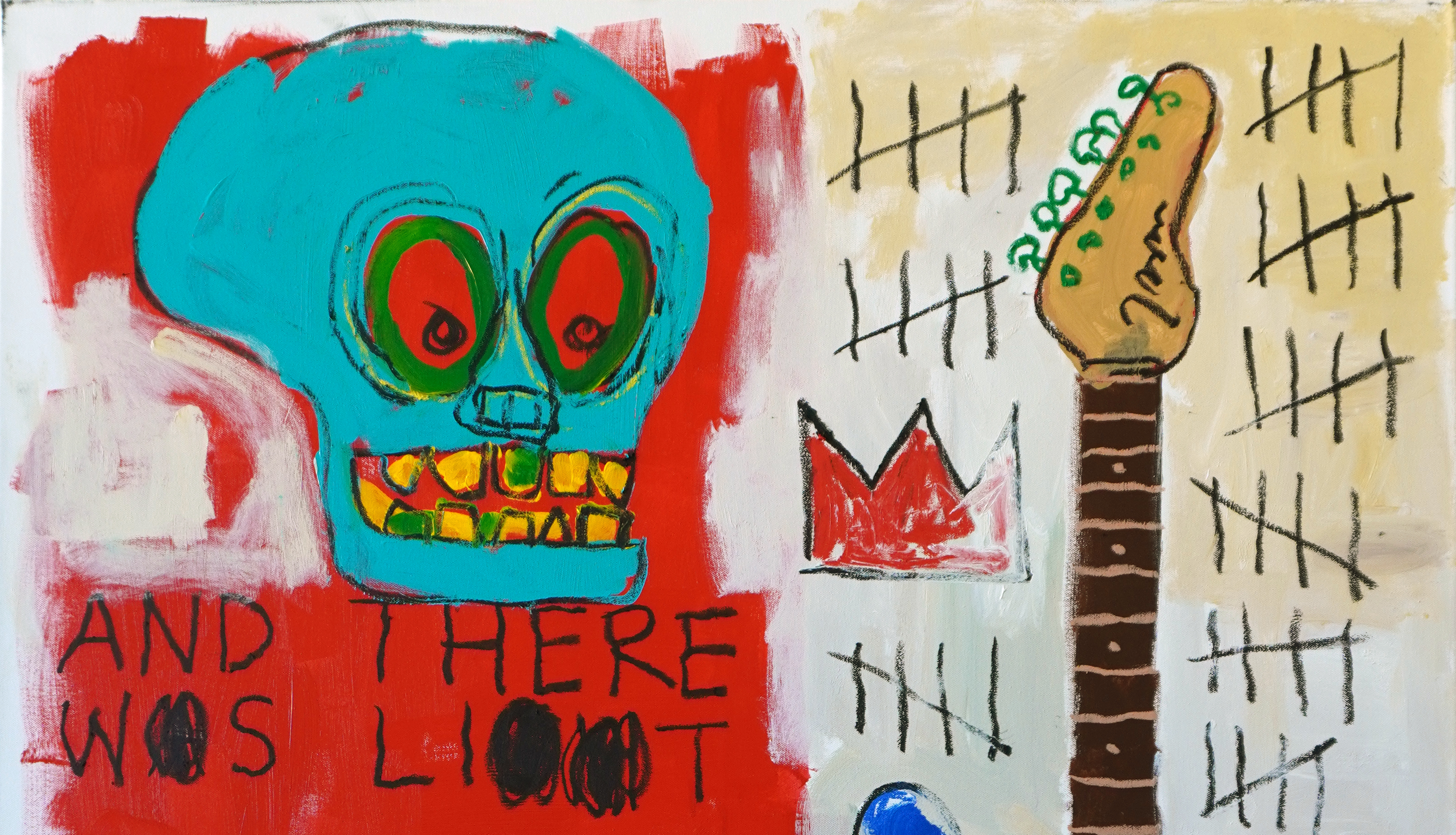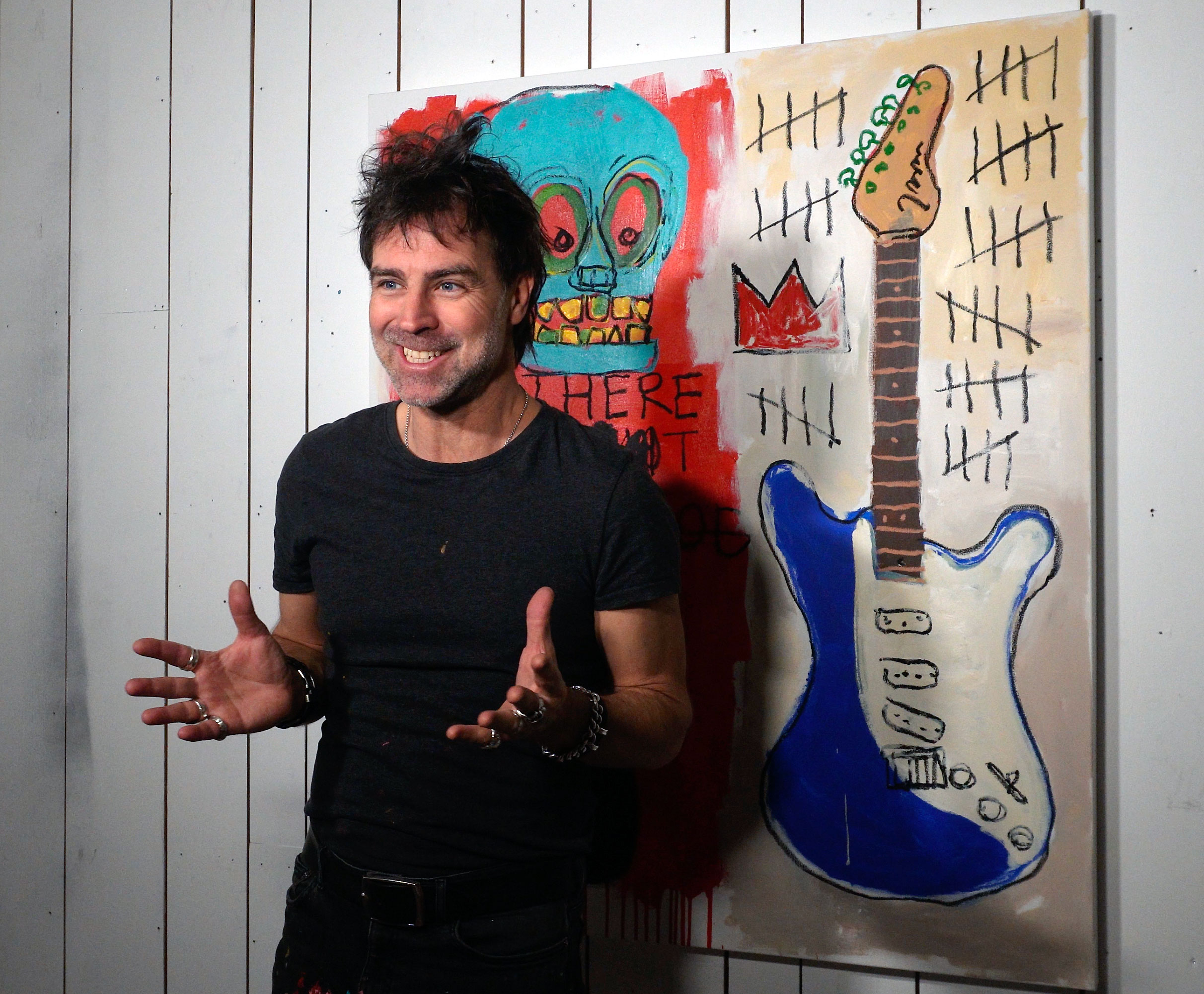
Class Index
- Short introduction of the painting class :
- About the artist (presentation about the artist’s biography and work with Stéphane Ducret’s personal insights) : 19’31’’
- Presentation and list of the painting tools needed : 13’30’’
- Painting the artwork, step-by-step : 1h19
- Conclusion and feedback on the work done : 8’24’’
Total number of vidéos : 15
Downloads : 1 list of materials
Total duration of the class : 2h01
Language : English
Subtitles : English / French
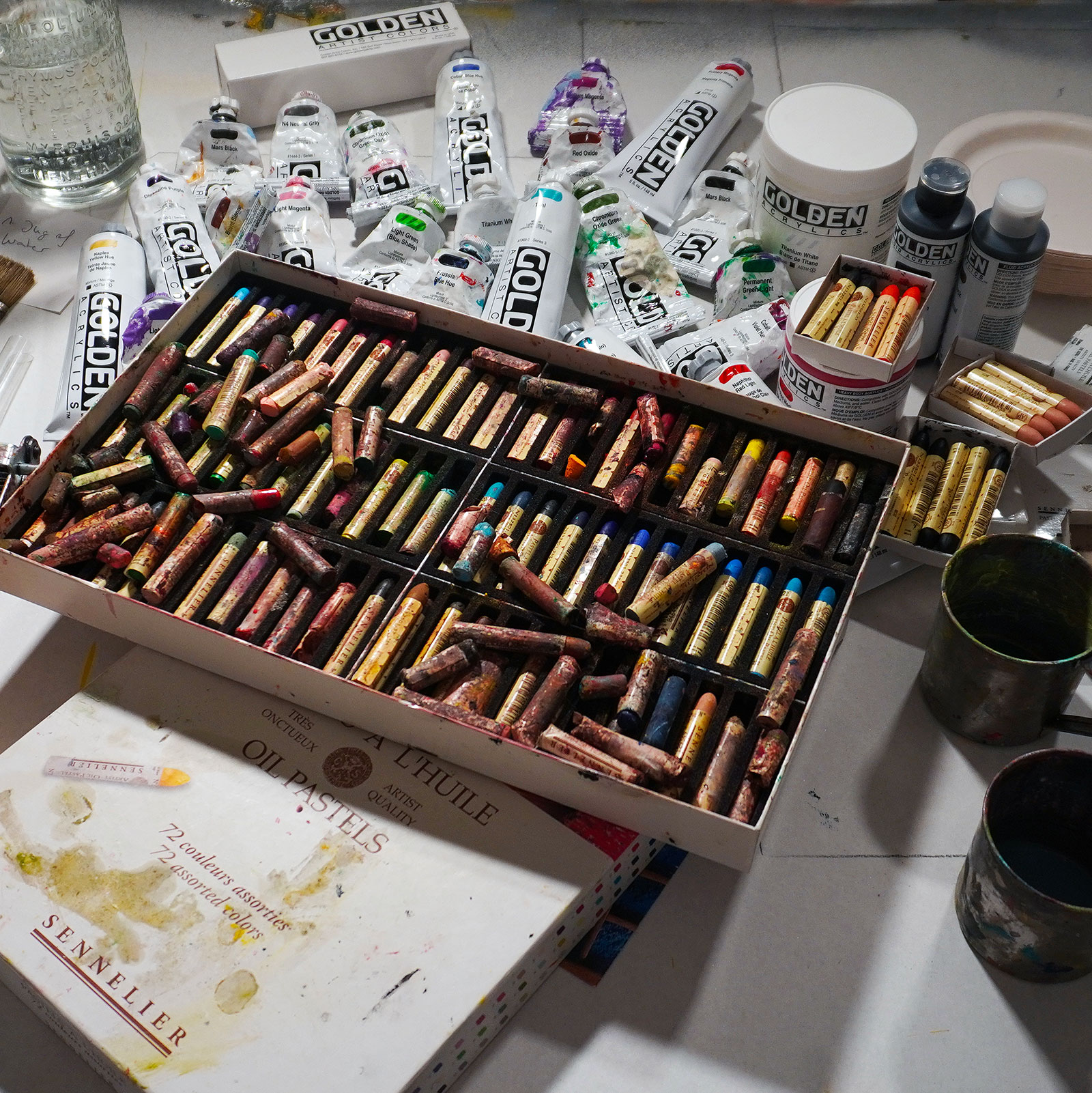
The Tools
A complete list of the tools needed and the direct links to the e-shops where you can order them at the best price (for now, in Switzerland only).
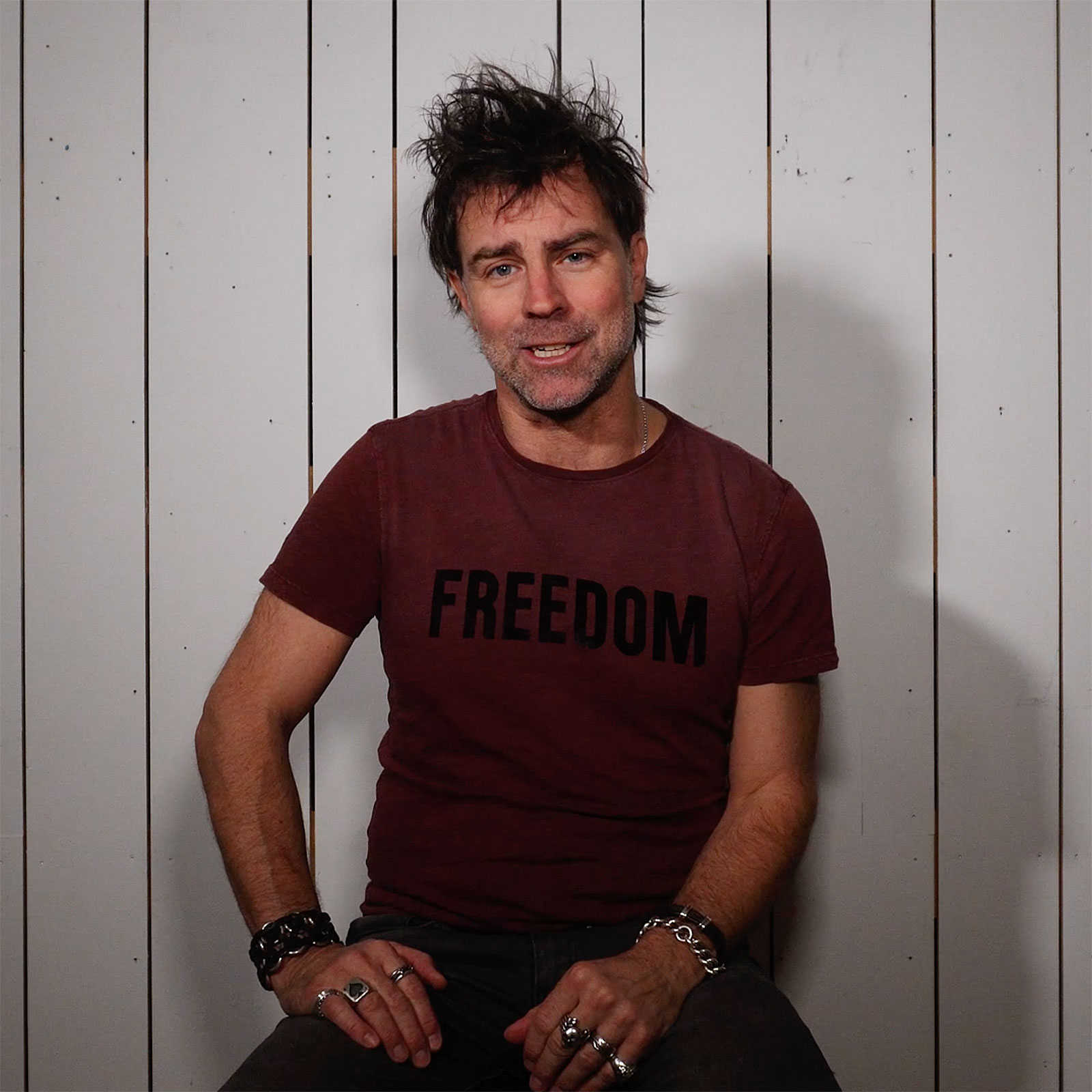
About The Artist
Stéphane introduces the genius Jean-Michel Basquiat, the cultural environment in which he grew up and how he became famous very early in his short life.
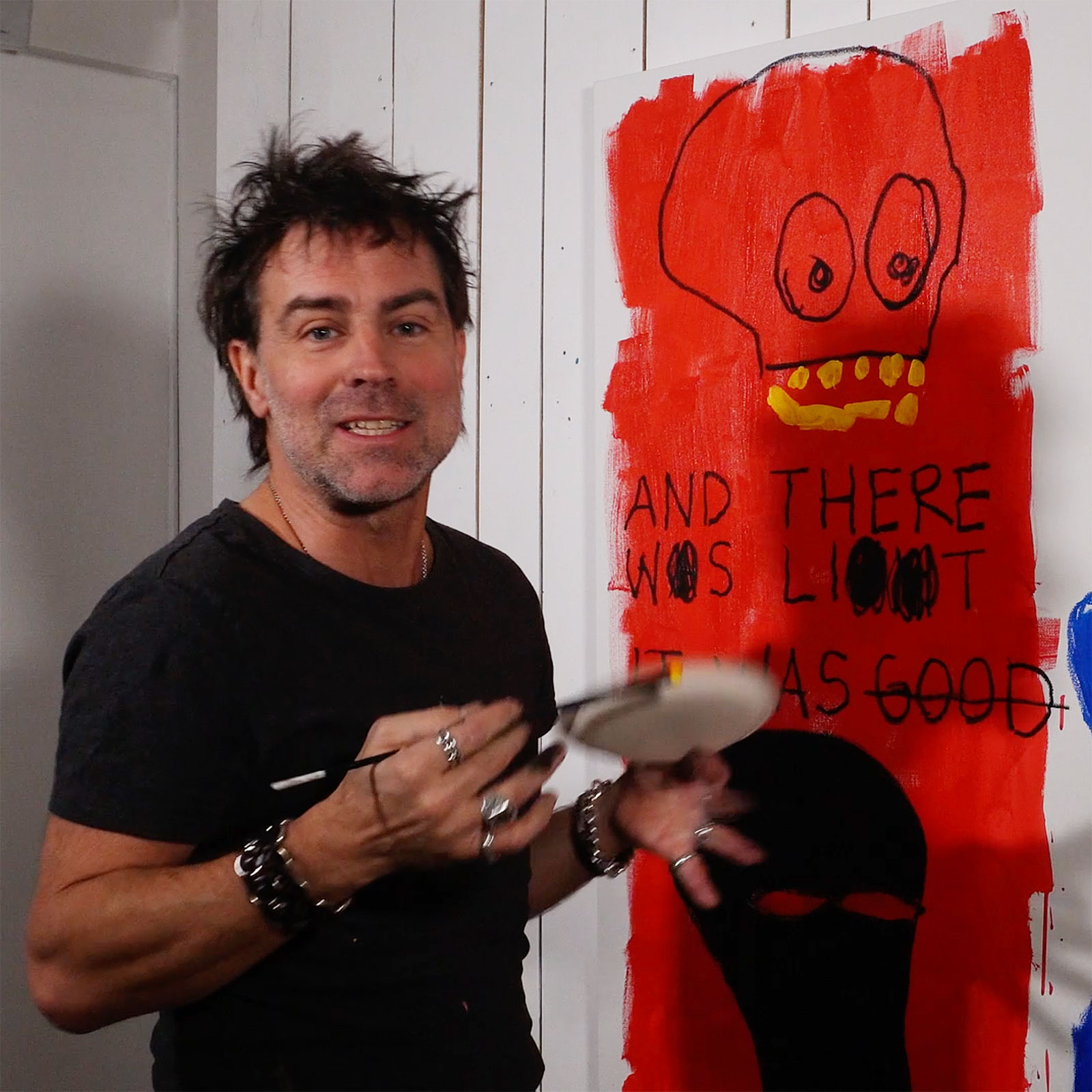
Step-By-Step
By following Stéphane Ducret’s step-by-step easy explanations, you will be able to create your own artwork based on Jean-Michel Basquiat’s "heroic" paintings.
Class Curriculum
Stéphane brings you into this Atelier REAL/FAKE about Jean-Michel Basquiat’s "heroic" paintings and, after having introduced the artist's practice, he shows you step-by-step how to paint your own "heroic" painting.
Total duration of the class : 2h01
- Part 1 : Stéphane presents Jean-Michel’s family and the cultural environment in which he grew up. A serious accident will have such an impact on the young Basquiat, that his art will deeply be influenced by a special gift his mother Matilde gave him while at the hospital… (6:15)
- Part 2 : Cars, skulls, jazz musicians: Basquiat was painting on every object he could find in the streets… Stéphane speaks about how Basquiat gets to be part of a determinant exhibition show that leads Gallerist Annina Nosei to discover him and invite him to exhibit there. (6:31)
- Part 3 : Stéphane speaks about how for Basquiat, it was important to be accessible to all kinds of publics, so there was no surprise to see Gallerist Bruno Bischofberger organising a collaboration between two of the most famous artists of that moment: Andy Warhol and Jean-Michel Basquiat. (6:46)
- List of materials with links to an e-shop
- Stéphane goes through the painting tools and materials needed and gives an insight on the creation of acrylic paint, in the middle of the Twentieth century. He also reminds of the times he used to live in New York, at the turn of the Millenium and went to legendary store Pearl Paint on Canal Street to buy his painting material. (13:30)
- Stéphane answers the questions of how to choose the format of the work and hang the canvas: horizontally or vertically. (2:30)
- Part 2 : Then, Stéphane raises the questions about how to start to paint like Basquiat: shall we start with the motif or with the background and then the motives? Answering to this question, he then starts to paint. 14’00’’ (14:00)
- Part 3 : Stéphane speaks about the origins of some of Basquiat’s subjects such as the crown, police cars, skulls, skeletons, Jazz musicians, etc. He then explains how to find the subject that will be yours and not only following or copying Basquiat’s subjects… how to make the painting yours, to appropriate his way to paint, but put your own stuff inside it… and, as an example, he shows his own inspiration for the next part of the painting. (9:52)
- Part 4 : When starting to paint in the manner of Basquiat, Stéphane explains the special way he used to hold his brushes and also to draw with oil sticks in order to mimic the way young children would draw, which gives his paintings this unique touch. (8:28)
- Part 5 : Now, Stéphane paints the body of the guitar in blue and shows another way to use the brush to do so, also when painting a layer of another color on the first one that is still fresh. Then, he adds some details such as the frets and keys with oil sticks. The guitar takes good shape. (14:38)
- Part 6 : The sculls and faces being some of the most noticeable attributes of Jean-Michel Basquiat’s paintings, Stéphane proposes now to paint both of them, starting with a black face. As Basquiat’s poetry is to be found, not only in the streets of Manhattan, but on his paintings then, Stéphane will add a piece of it, to show in what manners we should write it. (9:26)
- Part 7 : Stéphane then draws and paints the skull with big open eyes, as if the skull was a living being, following Basquiat’s style. (7:19)
- Part 8 : As Stéphane mentioned at the beginning of the class, one can start with a background and then paint on it (hence the black figure, the poem and the skull), or start with a drawing (the guitar) and then paint a background. So here, he paints the background around the guitar too. (7:22)
- Part 9 : Finishing the painting, Stéphane now shows us how to draw and enhance some elements of the motif, the guitar, and adds to the work one of the most noticeable elements that Basquiat uses in his work: the crown. (7:40)
Pricing of the full Membership
Monthly price (billed annually) : $ 15
This class is currently only available with the full Membership.
Included in the full access Membership
All the actual and upcoming e-ateliers REAL/FAKE classes are included in the membership program.
New classes coming soon & regularly during this year and the years to follow.
